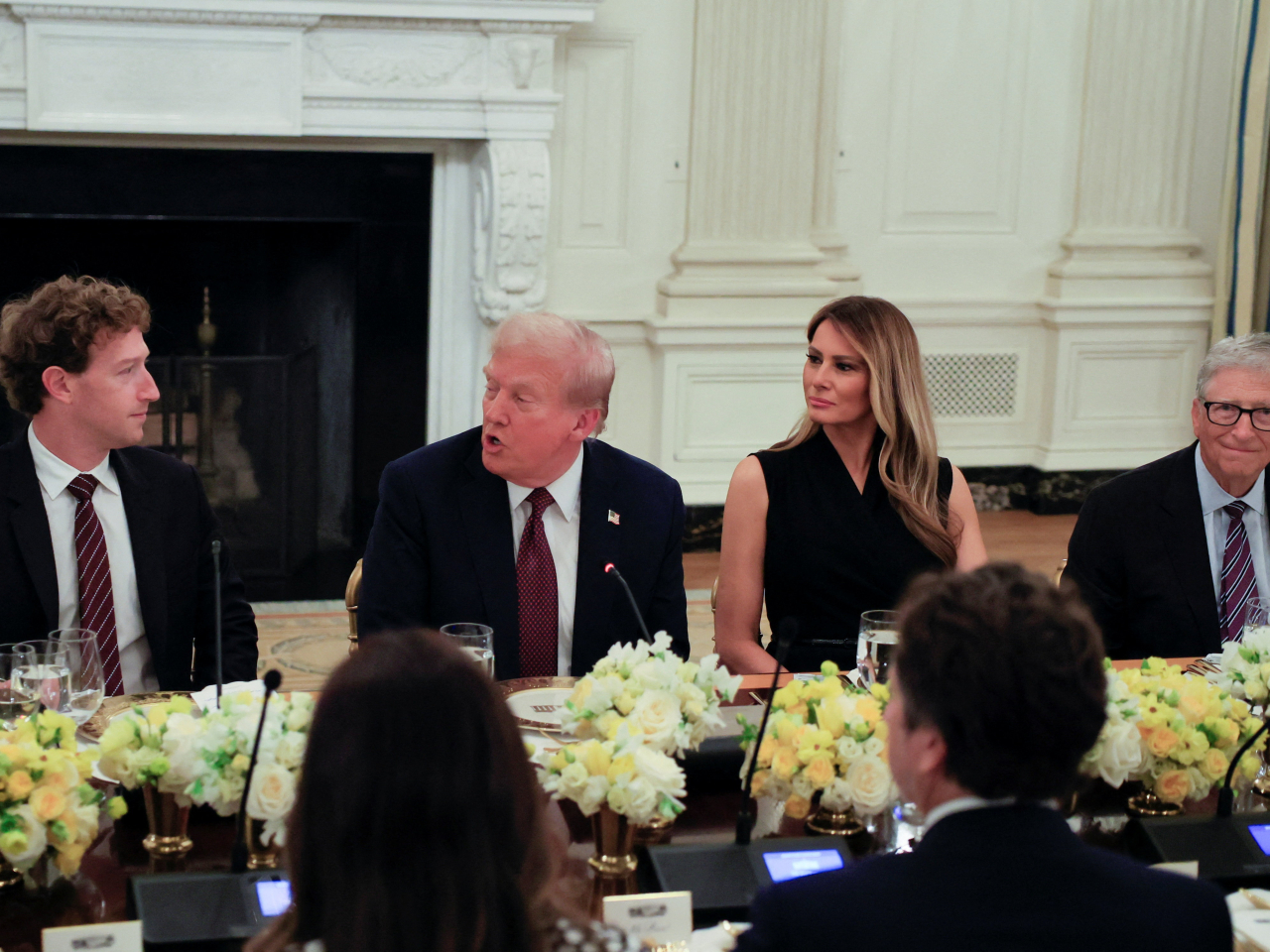The Trump administration has said it will ask companies to pay US$100,000 per year for H-1B worker visas, potentially dealing a big blow to the technology sector that relies heavily on skilled workers from India and China.
Since returning to the White House in January, Donald Trump has kicked off a wide-ranging immigration crackdown, including moves to limit some forms of legal immigration. The step taken on Friday to reshape the H-1B visa programme represents his administration's most high-profile effort yet to rework temporary employment visas.
"If you're going to train somebody, you're going to train one of the recent graduates from one of the great universities across our land. Train Americans. Stop bringing in people to take our jobs," Commerce Secretary Howard Lutnick said.
Trump's threat to crack down on H-1B visas has become a major flashpoint with the tech industry, which contributed millions of dollars to his presidential campaign. Microsoft and JPMorgan, after the announcement of the new fees, advised employees holding H-1B visas to remain in the United States, according to internal emails reviewed by Reuters.
They also advised employees on the H-1B visas who were outside the United States to return before midnight on Saturday, 12pm on Sunday Hong Kong time, when the new fee structures are set to take effect.
"H-1B visa holders who are currently in the US should remain in the US and avoid international travel until the government issues clear travel guidance," read an email sent to JPMorgan employees by Ogletree Deakins, a company that handles visa applications for the US investment bank.
Critics of the H-1B programme, including many US technology workers, argue that it allows firms to suppress wages and sideline Americans who could do the jobs. Supporters, including Tesla CEO and former Trump ally Elon Musk, say it brings in highly skilled workers essential to filling talent gaps and keeping firms competitive. Musk, himself a naturalised US citizen born in South Africa, has held an H-1B visa.
Some employers have exploited the programme to hold down wages, disadvantaging US workers, according to the executive order Trump signed on Friday. The number of foreign science, technology, engineering and mathematics (STEM) workers in the United States more than doubled between 2000 and 2019 to nearly 2.5 million, even as overall STEM employment only increased 44.5 percent during that time, it said.
Adding new fees "creates disincentive to attract the world's smartest talent to the US," said Deedy Das, partner at venture capital firm Menlo Ventures, on X. "If the US ceases to attract the best talent, it drastically reduces its ability to innovate and grow the economy."
The move could add millions of dollars in costs for companies, which could hit smaller tech firms and start-ups particularly hard.
Lutnick said the visa would cost US$100,000 a year for each of the three years of its duration but that the details were "still being considered." Under the current system, entering the lottery for the visa requires a small fee and, if approved, subsequent fees could amount to several thousand dollars.
Some analysts suggested the fee may force companies to move some high-value work overseas, hampering America's position in the high-stakes artificial intelligence race with China.
"In the short term, Washington may collect a windfall; in the long term, the US risks taxing away its innovation edge, trading dynamism for short-sighted protectionism," said eMarketer analyst Jeremy Goldman.
India was the largest beneficiary of H-1B visas last year, accounting for 71 percent of approved beneficiaries, while China was a distant second at 11.7 percent, according to government data.
In the first half of 2025, Amazon.com and its cloud-computing unit, AWS, had received approval for more than 12,000 H-1B visas, while Microsoft and Meta Platforms had over 5,000 H-1B visa approvals each. (Reuters)





